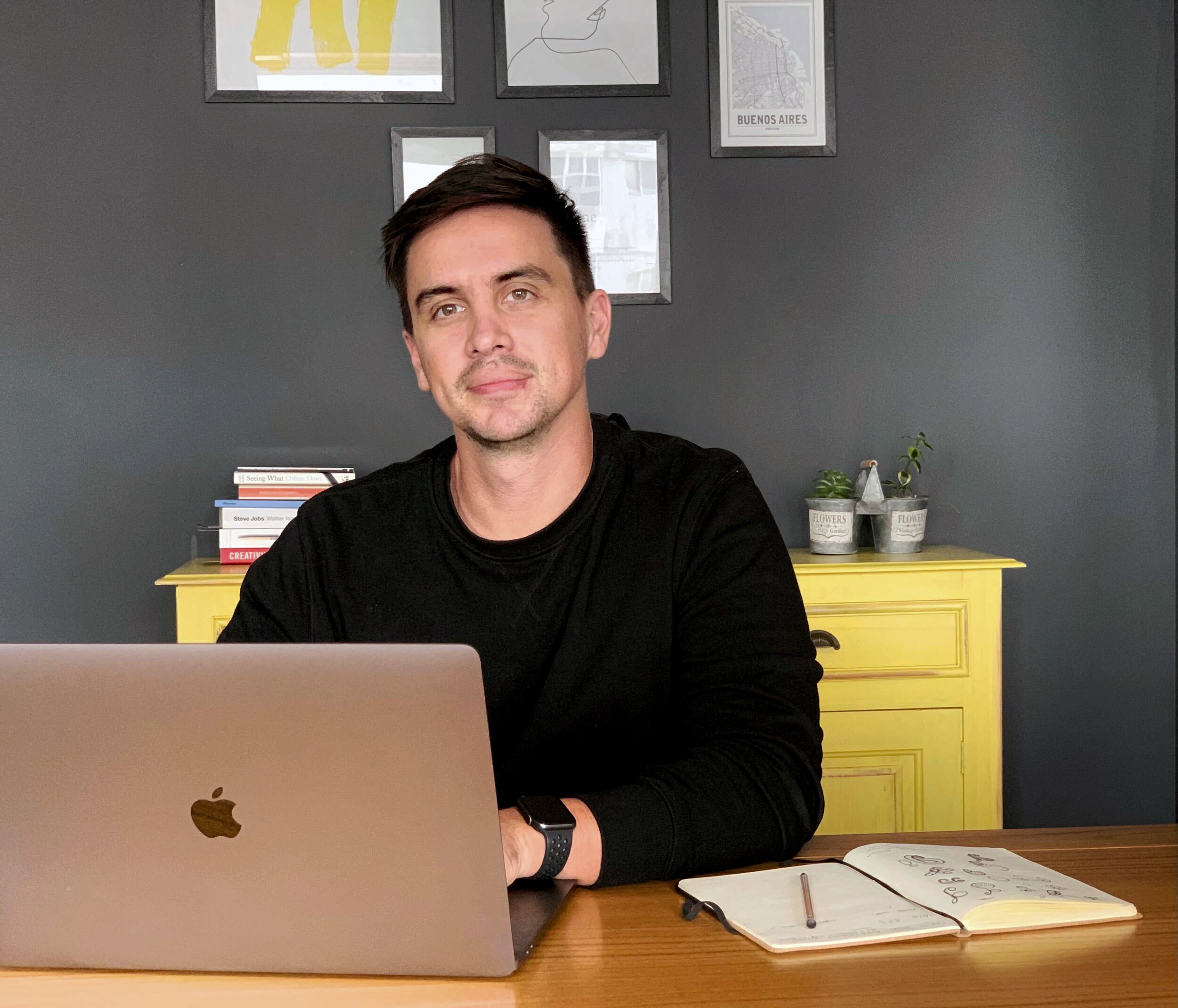How Fabrizio Used Hypothesis-Driven Design to Double Subscribers
Fabrizio is a product designer focused on helping tech companies make better-informed design decisions that drive business results. He is a co-founder of Lunte Studio, a remote-first product design consultancy. When he’s not in front of his computer, you might find him mountain biking near his home in Córdoba, Argentina, where he’s based.
By Fabrizio Colasanto, d.MBA alum, with contributions by Clare Goldblatt
One of my clients used to have a dry cleaning pick-up and delivery service as their primary revenue source. However, due to the pandemic, many users didn’t feel compelled to use this service as it wasn’t necessary to show up at the office in crisp suits and pristine dresses. Instead, formal attire that requires professional cleaning was cast aside as sweatpants and leggings dominated the business world’s drowsy video calls.
My client, just like countless others during the pandemic, was struggling to achieve its goals, and therefore, decided to update its business model.
They had a pay-as-you-go model for their dry cleaning services. The pay-as-you-go model tended to be expensive for users, especially during a period when dry cleaning services were less in demand. Additionally, my client noticed that during the pandemic, laundry services were still in demand, as local laundromats and even shared laundry facilities in buildings raised health concerns. Therefore, we determined that there was a lot of potential in the subscription-based laundry services during COVID, but noted that the sign-up flow wasn’t effective at getting all the potential subscribers, as many users dropped out during sign-up.
We decided to use hypothesis-driven design to see exactly how we needed to transform my client’s product.
Hypothesis-driven design helps break project goals into hypotheses, which can rigorously test with prototypes. It brings structure to the design process, which lets us identify problems and solutions for design concepts.
The first step was to conduct research with the users in order to better understand why they weren’t subscribing. It turned out that the users who had signed up but never tried the service didn’t proceed because they didn’t understand the process of the laundry subscription model and first pick-up. Users need bags in order to get their dirty laundry picked up, and it was unclear how much they would have to ultimately pay for the service. We decided to move towards redesigning the whole sign-up flow.
Using the hypothesis-driven design, our primary goal was to increase the number of subscribers of the laundry service, while the secondary goal was to maintain the same conversion rate of first-time orders.
In order to test our hypothesis, we did some additional usability testing, using a newly-improved iteration of our sign-up flow.
To make these decisions, we actually used a tool from the strategic toolkit called ERRC grid, which helped us determine what features we needed to eliminate, improve, or introduce. In this new flow, we simplified the product offering as secondary services, and add-ons were reduced, the pricing model was clearly explained, some steps were re-arranged in the flow, and visuals were added to clearly convey the value proposition.
The idea behind the testing was not only to see if they would sign up but if they would actually understand the service. We didn’t alter any functionality or core logic. This new and improved flow was tested against the old flow in an A/B test and we immediately saw an uplift of new subscribers within two weeks, while overall conversion also increased. The client was so happy with this new sign-up funnel that they decided to implement this sign-up process for all of their products.
Example of hypothesis-driven design usage in Fabrizio’s project.
After 2 months, we got the nice surprise that the number of subscribers had doubled.
It was empowering to be able to show design not just as a visual asset, but as an experimental tool that’s able to make a measurable impact on a business.
This client has since shown their trust and appreciation and has invited my consultancy, Lunte, to be involved in more high-level business projects and decisions.

